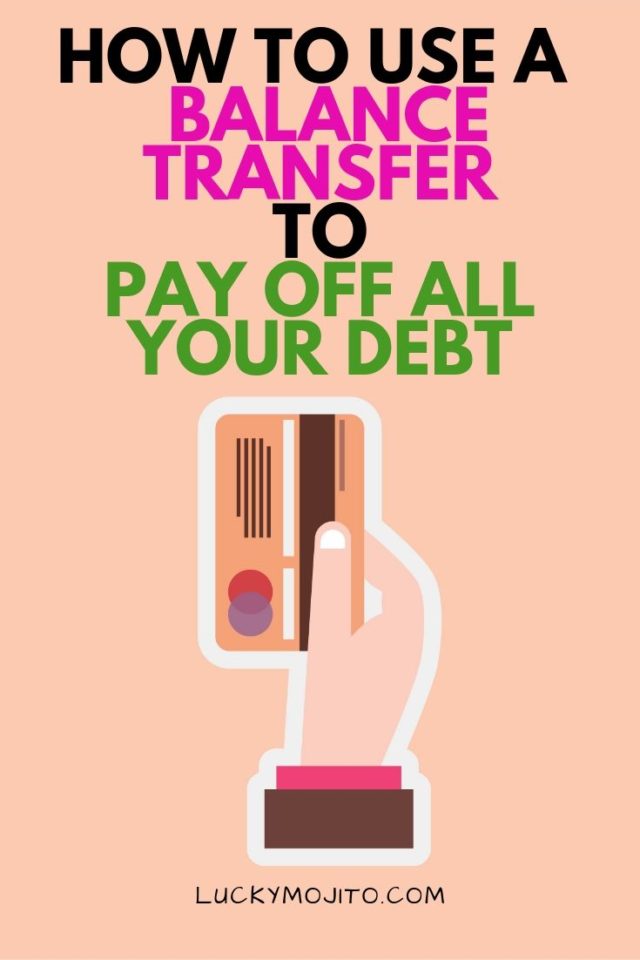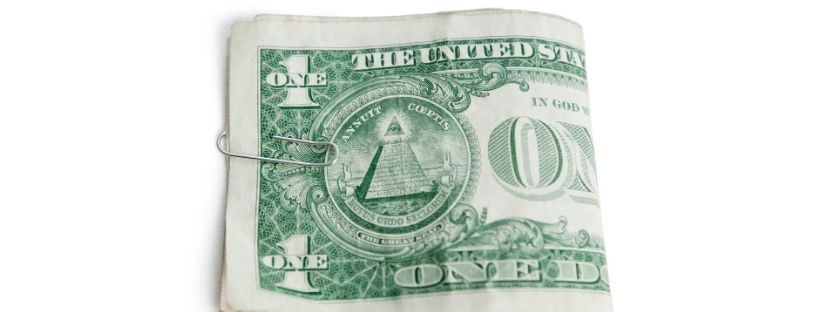Fast Way to Pay Off Debt Using a Balance Transfer
You want to work your way out of debt, but you can barely pay more than the minimum balance. What can you do?
When my husband and I got into credit card debt it happened suddenly and quickly.
We were getting ready to move, but had to pay closing costs, oil tank removal fees for an underground tank we didn’t know about in our previous home (super expensive!!), and moving costs.
We had little savings and one thing after another seemed to happen. We could barely make our minimum payments and the majority of our payments went to interest.
{This post may contain affiliate links, which means that I may receive a commission if you make a purchase using these links. Full disclosure policy.}
One day my husband suggested we do a balance transfer and as they say, the rest is history.

What is a balance transfer?
A balance transfer is when you transfer and consolidate your existing debt (e.g. car loan, credit card, student loan, etc.) to a credit card with a lower interest rate or 0% interest for an introductory period, typically 12-18 months.
My husband found out about balance transfers when we received a promotion in the mail from one of our existing credit cards.
They were offering us a 0% interest balance transfer for 18 months and a 3% transfer fee or $5, whichever was greater.
According to WalletHub, “the average credit card interest rate is 19.24% for new offers and 14.4% for existing accounts”.
By doing a balance transfer we were able to save thousands of dollars in interest.
When to do a balance transfer?
A balance transfer is a very powerful tool that can be used to avoid paying lots of interest, but used incorrectly, it can cause you more grief than good.
You should consider doing a balance transfer if you:
Have high interest debt.
Can’t make all your minimum payments because you have too many different payments to keep up with.
When you can get a great promotion with a 0% introductory rate and lengthy promotional period.
So how do you know if a balance transfer is for you?
Balance transfer calculator
CreditCards.com has this nifty balance transfer calculator that lets you plug in your numbers. You are going to need your account balances, interest rates (APY), and monthly payments.
The calculator will let you know how much money you’ll save on interest and net of fees.
Best balance transfer credit cards
There are many balance transfer cards out there.
One thing to note is you can’t transfer your credit card debt to the same card.
Over time we have tried many different credit cards based on their cash back promotions and offers.
Our Chase Freedom card offers some of the lowest balance transfer rates, currently 4%.
American Express also has several credit cards, one of which offers 0% interest for 15 months.
Time can be more important than the rate so be sure to do your math.
If you can’t pay off the debt you transferred within the promotional period be sure that even if you pay your new interest rate you’ll still end up saving more money than before.
Balance transfer strategy
I can’t stress how important it is to sit down and crunch your numbers.
After crunching our own numbers we had to figure out how much we wanted to transfer.
We chose to only transfer what we could afford to pay off within the promotional period. The remaining amount was paid off as soon as possible through our side hustles and cutting these expenses.
Come up with a game plan before you do the transfer. Is your new monthly amount something you can afford?
Maybe you want to transfer all your debt and pay off as much as you can in the 0% interest time frame. From there you can do another balance transfer.
The goal is to eliminate your credit card debt, not continuously transfer until you put yourself into a corner.
No two financial situations are the same. Maybe you only need to transfer half of your debt and can pay off the remaining balance without having to transfer.
Related posts:
* Items Missing From Your Budget
* Expenses to Cut Out When You’re in Debt
* How You Can Save Money When You’re Broke
Balance transfer mistakes
Do NOT use the credit card you transferred your existing debt for anything else. Put it in a drawer or somewhere safe where you aren’t tempted to use it. The main reason is because the 0% interest period doesn’t last forever.
Don’t put new debt on your old credit card either, that defeats the purpose of doing the balance transfer. Try to reduce your spending (groceries, electric bill, heating bill, phone bill, etc.).
Not knowing the terms of your balance transfer.
When does the promotional period end?
What is your new minimum payment?
What does the interest rate go up to after the promo period?
These are all questions you need to have answered before you do your transfer. Read the small print and if you aren’t sure ask.
FINAL WORDS
Using a balance transfer is a great way to pay off your credit card debt without paying a ton in interest. This means your payments will start going to the principal instead of the interest.
Be responsible.
Read all the balance transfer details, dates, and promotional period.
Use a balance transfer calculator and see how much you can afford to pay each month and how much money it’ll save you.
I never would have considered a balance transfer, but thanks to my husband, we were able to pay off over $33,000 in credit card debt and save thousands in interest.
If you’re considering a balance transfer compare, research, and plan. If you have any questions post them below and I’ll try my best to answer.




